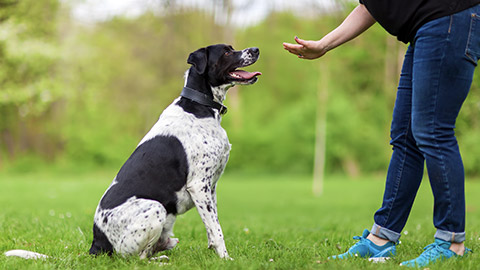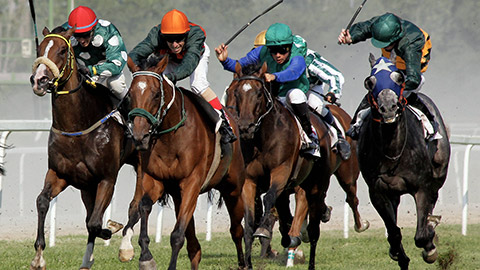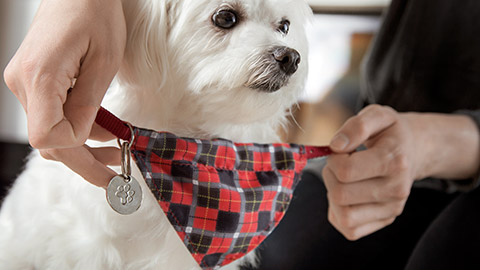There are four types of behaviour modifications or conditioning that can be used when training animals. These are:
- Positive reinforcement
- Positive punishment
- Negative reinforcement
- Negative punishment
Watch this Ted talk on dog training
This is when a desirable stimulus is introduced after an animal has demonstrated a behaviour.
The introduction of the stimulus reinforces the behaviour, making is more likely for the behaviour to reoccur.
For example:
You are training your dog to sit. After voicing the command 'sit' and signaling your hand, the dog sits. You reinforce this behaviour by giving the dog a tasty treat.

This is when an undesirable stimulus is introduced to discourage a behaviour. The idea is to decrease the behaviour but not to discipline the animal.
The timing of positive punishment must be timed correctly. The stimulus must be introduced while the animal is demonstrating the behaviour and ideally just as the behaviour starts.
For example:
The horse racing industry use whips when the horses slow down to encourage them to run faster.

This refers to an undesirable stimulus being removed to encourage the behaviour. When you remove something that increases or maintains the frequency of the behaviour.
Negative reinforcement can either be:
- When you take away something negative when the dog does something right
OR
- When you take away something positive when a dog does something wrong
For example: The use of shock collars in barking dogs. When the dog stops barking, you take the barking collar off.

This refers to a desirable item being removed to discourage a behaviour.
For this to be effective, the item that is removed must be of high value to the animal.
For example:
If a puppy is biting or nipping, the owner gets up and walks away. In this situation the owner is the high value item.


